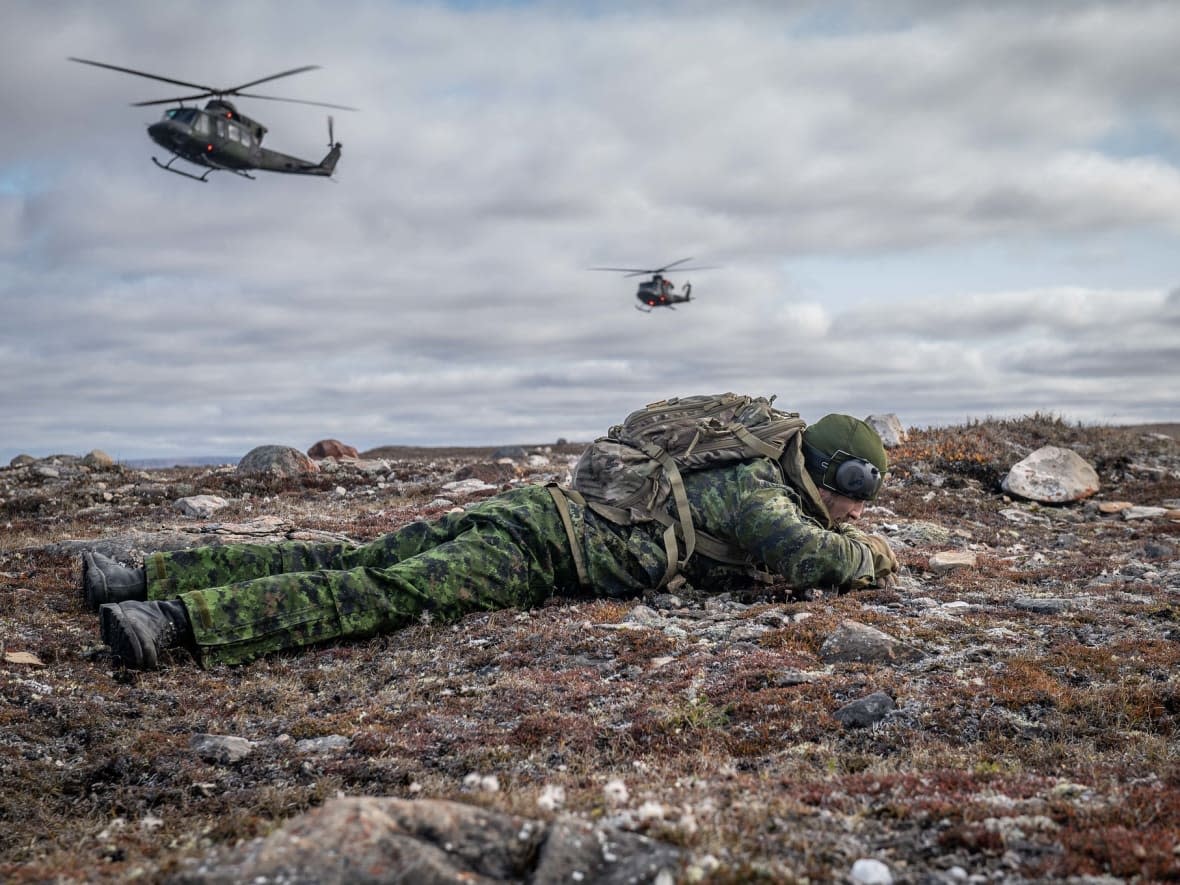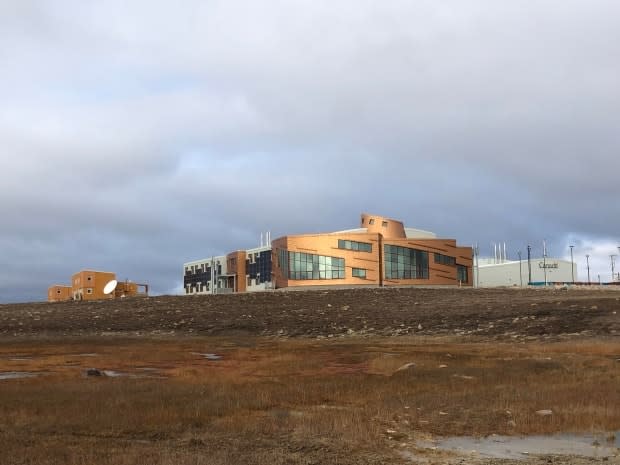Canadian sovereignty exercises kick off around Nunavut

Soldiers and sailors, along with Twin Otters, Griffon helicopters and three offshore Arctic patrol vessels, are heading to Nunavut.
They're all part of Operation Nanook, which now includes four yearly sovereignty and military exercises in the Arctic.
Starting Monday, soldiers and Canadian Rangers will be based out of Cambridge Bay for Operation Nanook-Nunakput, one of two Operation Nanook exercises slated for this month and next.
About 200 personnel are due to arrive Monday in Cambridge Bay, said Lt.-Col. David Meehan, the Joint Task Force Commander of Operation Nanook-Nunakput, in an email.
The western Nunavut hub community of about 1,700 is "a perfect location to base these assets out of, infrastructure and geographically speaking," he said.

Cambridge Bay is located at the western end of the Northwest Passage, which Canada claims as internal waters.
While the Northwest Passage was closed to pleasure craft and cruise vessels in 2020 and 2021 due to the COVID-19 pandemic, this year several cruise ships and yachts are expected to travel through it, passing by Cambridge Bay in the west and Pond Inlet on the eastern entrance.
To keep an eye on the uptick in maritime traffic, roughly 100 of those headed to Cambridge Bay for Op Nanook-Nunakput will form a "land component," made up primarily of reservists from the 31 Canadian Brigade Group in southwestern Ontario, supported by Rangers from the 1st Canadian Ranger Patrol Group.
These troops will deploy further to outlying areas via Royal Canadian Air Force aircraft, Meehan said.
The Fourth Canadian Division Arctic Response Company Group, created to support the regular soldiers and the Rangers, will serve as the main land force for the operation.
They'll observe shipping while the shipping lanes are open, he said.
The Joint Task Force, led by the Grey and Simcoe Foresters, will operate out of the Canadian High Arctic Research Station in Cambridge Bay.
Soldiers in Cambridge Bay will be based at CHARS, which has accommodation in several residences by the building.
But if there is any overflow of personnel, they will use tents, Meehan said.
In 2019, during the last major Op Nanook exercise in Cambridge Bay, tents were sent up near the Cam-Main radar facility.

Meanwhile, Royal Canadian Navy members plan to operate in Pond Inlet, Arctic Bay and Qikiqtarjuaq where another Op Nanook sovereignty exercise, Operation Nanook-Tuugaalik, has already started.
This week, Arctic patrol boats, the HMCS Harry DeWolf, HMCS Margaret Brooke and HMCS Goose Bay, have been observing a naval military exercise off Greenland alongside partners from the United States, Denmark and France.
The DeWolf then plans to head to Pond Inlet for a community visit and various studies, navy Capt. Sheldon Gillis, the operation's maritime task force commander, told CBC North.
Research is set to focus on sea mammals and how ships or vessels affect them, and there are plans to talk to hunters in Pond Inlet to ask them if they've seen unusual developments, Gillis said.
Then, the DeWolf will travel to Cambridge Bay through the Northwest Passage, returning to Halifax for the end of September after passing through Nuuk and Nunatsiavut.
Earlier this year, ice diving in the Arctic Ocean was part of this year's wintertime exercise, Operation Nanook-Nunalivut.


